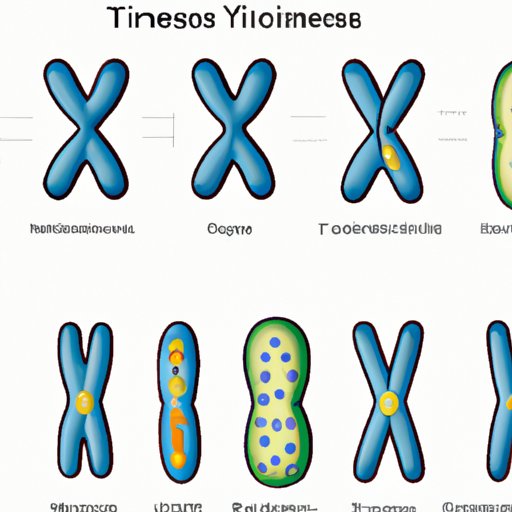Introduction
Chromosome formation is a complex and fascinating process that plays a critical role in cell division. Chromosomes are essential for the proper distribution of genetic material, which is crucial for the development and survival of organisms. In this article, we will explore when chromosomes first become visible and the early stages of their formation.
The Fascinating Process of Chromosome Formation: When Do They First Become Visible?
Chromosome formation begins with DNA replication, the process by which cells make exact copies of their genetic material. DNA replication occurs during a phase called interphase when the cell prepares to divide. Once DNA replication is complete, the DNA strands begin to condense and form structures known as chromosomes.
Chromosomes typically become visible under a microscope during cell division when they become tightly packed. This process of condensation occurs during a phase called prophase, which marks the beginning of mitosis.
From Invisible to Visible: Understanding Chromosome Development during Cell Division
Cell division is a complex process that can be divided into several stages: interphase, prophase, metaphase, anaphase, and telophase. During interphase, the cell prepares for division by growing and replicating its DNA. At the beginning of prophase, chromosomes start to condense and become visible under a microscope.
During metaphase, the chromosomes line up in the center of the cell, and the spindle fibers attach to them. In anaphase, the spindle fibers shorten, and the chromosomes are pulled apart towards opposite sides of the cell. Finally, during telophase, the cell forms two nuclei before dividing into two daughter cells.
Unveiling the Mystery: The Earliest Stage of Chromosome Formation
The earliest stage of chromosome formation is DNA replication, during which the cell makes exact copies of its genetic material. DNA replication is a critical process as it ensures that each daughter cell receives a complete set of genetic information.
During this process, enzymes called DNA polymerases add nucleotides to the growing DNA strand, following the base pairing rules. This results in two identical DNA double helices that will eventually condense into chromosomes.
Catching Sight: When Do Chromosomes First Become Visible?
Chromosomes typically become visible under a microscope during the prophase stage of cell division. During prophase, the chromatin fibers condense and form distinct chromosomes that are visible under a microscope.
This process of condensation is necessary for the proper separation and distribution of genetic material during cell division. Without this condensation process, the chromosomes would not be visible, and it would be challenging to ensure that each daughter cell receives the correct genetic information.
The Critical Moment: Exploring Chromosome Visibility during Mitosis
Studying chromosome visibility during mitosis is crucial as it allows us to understand how genetic material is properly distributed during cell division. Abnormal cell division can lead to genetic instability, which is a hallmark of cancer.
During normal cell division, chromosomes become visible at the beginning of prophase and remain visible throughout mitosis. In contrast, abnormal cell division can result in chromosomes that are not visible, or that cannot be properly separated and distributed.
The Beginning of Chromosome Formation: Understanding the Early Stages
Understanding the early stages of chromosome formation is essential as it can help us to identify factors that can impact this process. For example, mutations in DNA polymerase enzymes can lead to errors in DNA replication and result in abnormal chromosome formation.
Additionally, exposure to certain chemicals or radiation can also damage DNA and impact the early stages of chromosome formation. By understanding the early stages of chromosome formation, we can develop strategies to prevent or mitigate these factors’ harmful effects.
The Dawn of Chromosome Division: When Do They First Appear Under the Microscope?
In this article, we have explored the fascinating process of chromosome formation and when chromosomes first become visible under a microscope. Chromosomes become visible during the prophase stage of cell division when the chromatin fibers condense and form distinct structures that are visible under a microscope.
Understanding chromosome formation and visibility is crucial for our understanding of genetic material’s proper distribution during cell division. Further research and learning on the topic can help us to identify strategies to prevent genetic instability, a hallmark of cancer.
Conclusion
Chromosome formation and visibility are critical processes that play a vital role in cell division. Understanding these processes can help us to develop strategies to prevent genetic instability and ensure the proper distribution of genetic information. We encourage further research and learning on this topic to deepen our understanding of cell division and its role in the development and survival of organisms.
